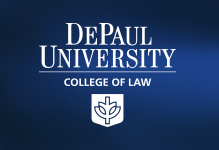Home > Law > DePaul Law Review > Vol. 64 > Iss. 2
Abstract
This Article explores the intersection between the judicial and scholarly work of Judge Jack Weinstein, particularly as related to mass tort litigation and the development of legal theory and tort law in America. The primary focus will be on Judge Weinstein’s handing of the Agent Orange litigation. Judge Weinstein’s tenure on the federal bench began in 1967. Some seven years earlier, Ronald Coase published his Problem of Social Costs, a monumental moment in American legal theory and tort law policy. Three years later, Guido Calabresi published his path-breaking text, The Costs of Accidents. These two texts are representative of the law and neoclassical economics movement, which would indelibly shape tort law theory in America during Judge Weinstein’s years as a judge. Law and neoclassical economics is most often discussed as a methodology for analyzing tort law on the basis of efficiency. However, it also exemplifies a broader approach to law that goes beyond efficiency analysis. This broader approach focuses its analysis on the social good as opposed to prioritizing individual rights. It is through the lens of these two features of twentieth-century legal theory (efficiency and the social good), particularly as they apply to tort law, that this Article will examine the Agent Orange litigation. An intriguing aspect of Judge Weinstein’s worldview, which is reflected in the disposition of the Agent Orange litigation, is that he champions efficiency and the social good while placing a premium on recognizing individual suffering as an existential reality. Of course, the Agent Orange litigation is also circumscribed by the specter of the Vietnam War, which makes it an even more compelling site of inquiry.
Recommended Citation
James R. Hackney, Jr.,
Judge Jack Weinstein and the Construction of Tort Law in America: An Intellectual History,
64
DePaul L. Rev.
(2015)
Available at:
https://via.library.depaul.edu/law-review/vol64/iss2/12

